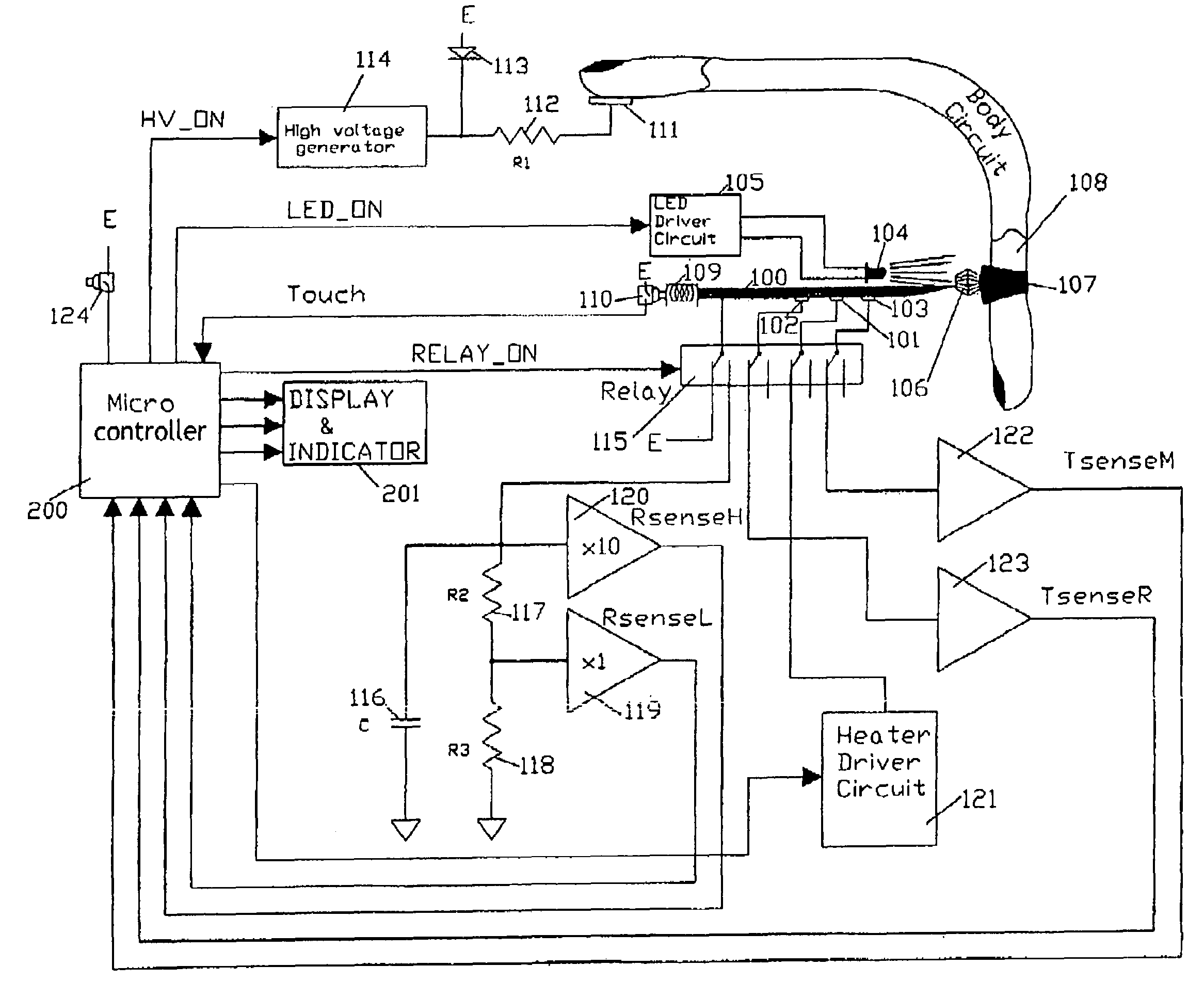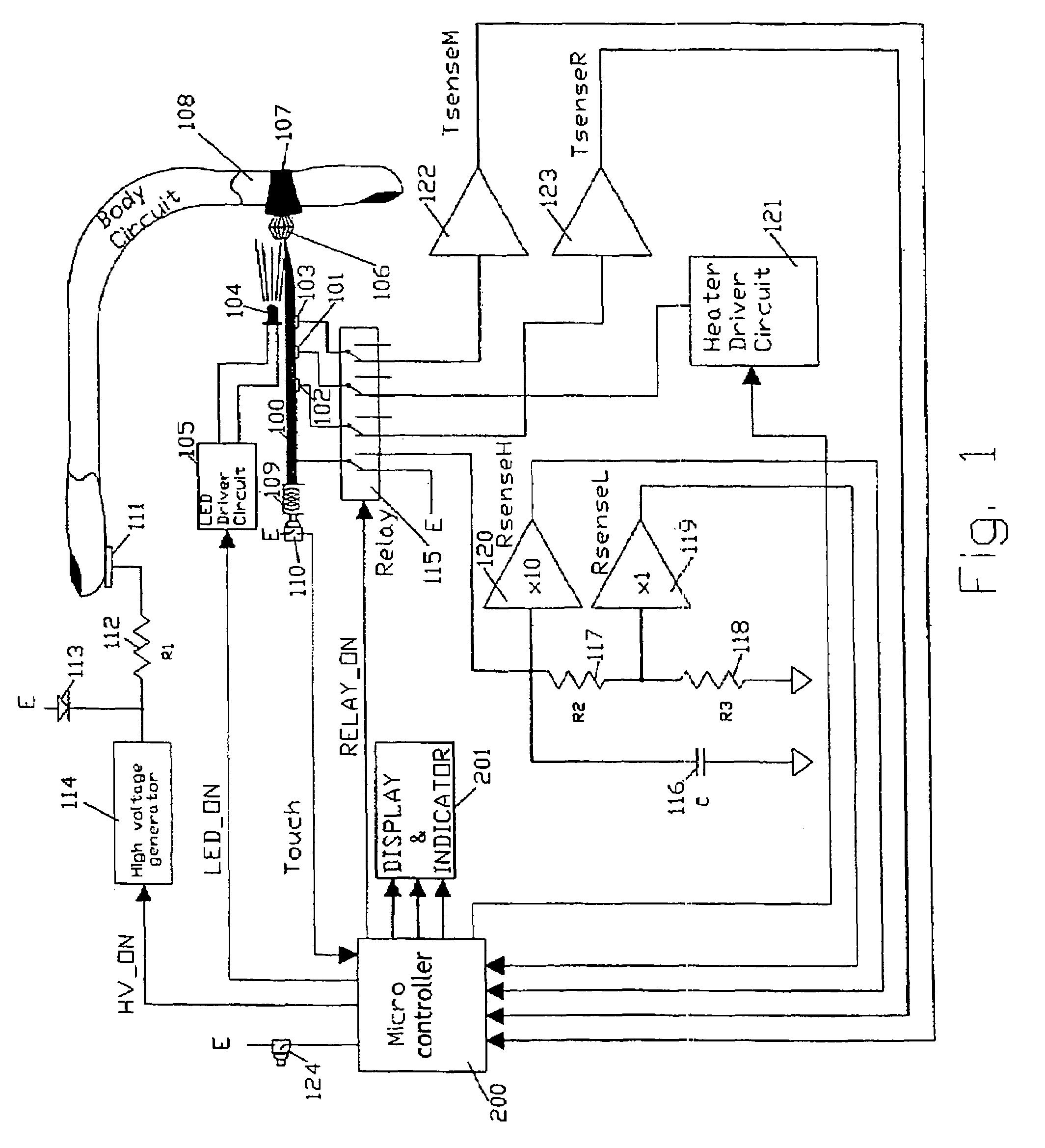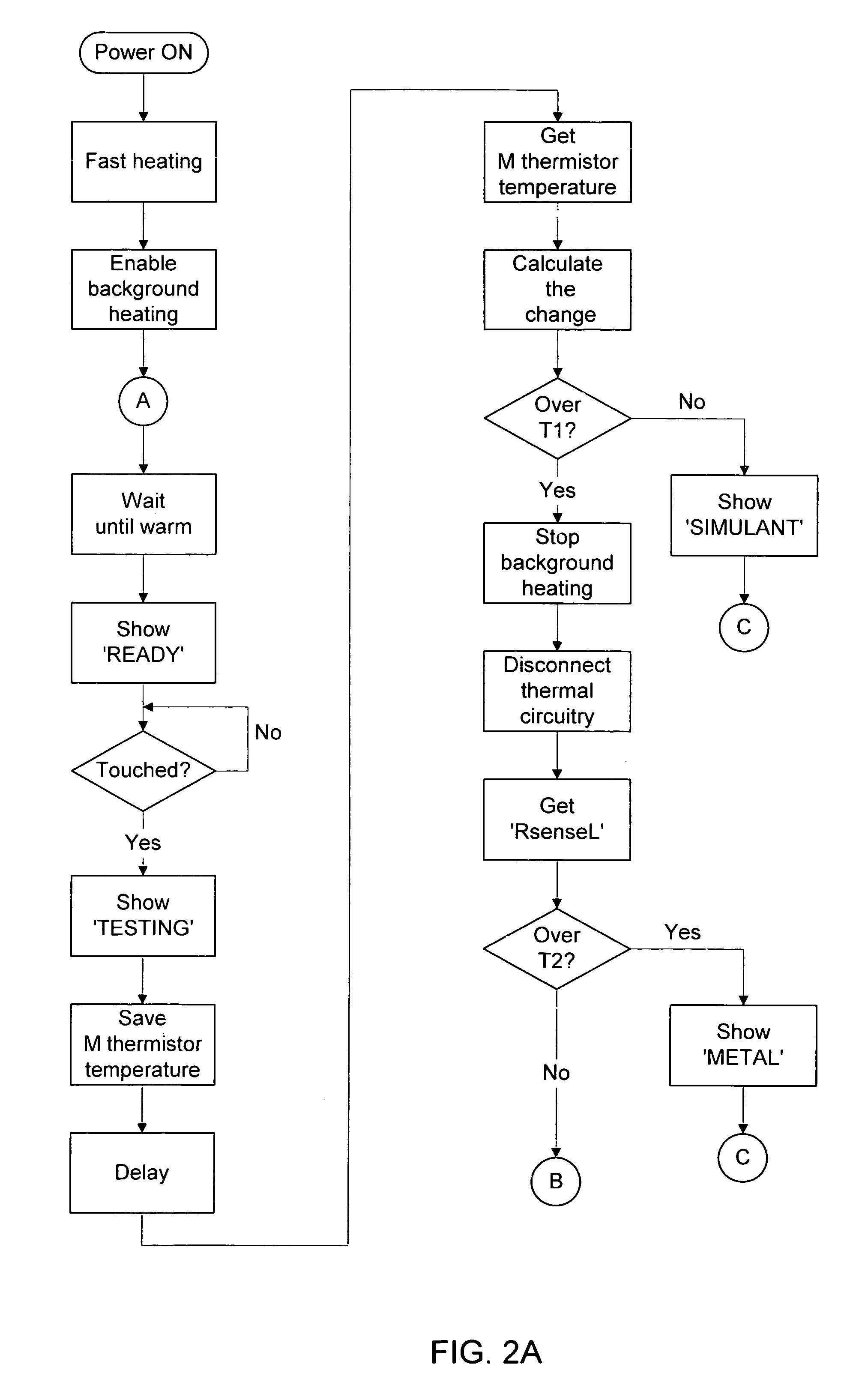Gem tester using electrical photoconductivity
a technology of electrical photoconductivity and gem tester, which is applied in the direction of resistance/reactance/impedence, measurement devices, instruments, etc., can solve the problems of time, time, and time consumption, and achieve the effect of reducing the effect of the object being tested, reducing the cost of operation, and improving safety and comfort for users
- Summary
- Abstract
- Description
- Claims
- Application Information
AI Technical Summary
Benefits of technology
Problems solved by technology
Method used
Image
Examples
Embodiment Construction
[0026]As other successful diamond testers on the market, present invention employs both thermal and electrical conductivity testing for the purpose of determining reliably whether the stone being testied is a natural diamond.
[0027]It should be noted that this device does not actually establish if the object, which is being tested, is a diamond, a moissanite, a synthetic diamond, or, say, cubic zirconium. Such positive identifications would require more sophisticated equipment and longer testing. The device just evaluates thermal and electrical conductivities. By the results of these measurements tested objects are determined as following. Those with electrical conductivity above certain threshold are announced as metal. Those with thermal conductivity below certain threshold are diagnosed as simulants. These may include cubic zirconium, some synthetic gems, plastics, or glass. Those with high thermal conductivity are diagnosed as diamonds when electrical conductivity is below certai...
PUM
 Login to View More
Login to View More Abstract
Description
Claims
Application Information
 Login to View More
Login to View More - R&D
- Intellectual Property
- Life Sciences
- Materials
- Tech Scout
- Unparalleled Data Quality
- Higher Quality Content
- 60% Fewer Hallucinations
Browse by: Latest US Patents, China's latest patents, Technical Efficacy Thesaurus, Application Domain, Technology Topic, Popular Technical Reports.
© 2025 PatSnap. All rights reserved.Legal|Privacy policy|Modern Slavery Act Transparency Statement|Sitemap|About US| Contact US: help@patsnap.com



